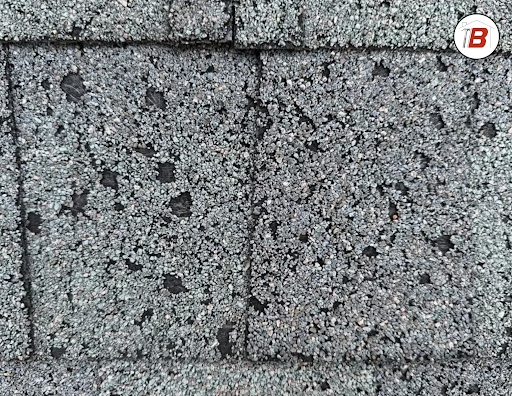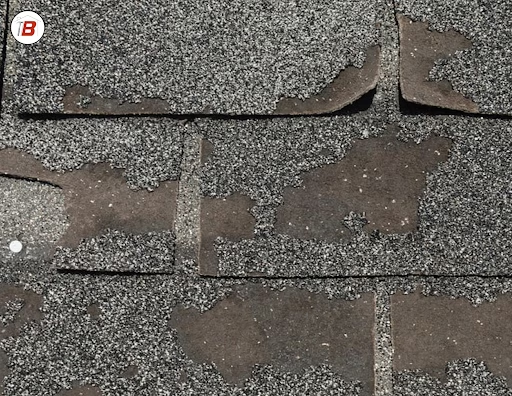Your roof is one of the most important investments you’ll make in your home. It protects everything beneath it from heat, rain, wind, and debris. But one often-overlooked threat to your roof’s longevity is sun blistering—a form of damage that may look small on the surface but can lead to serious problems over time.
In this article, we’ll break down what sun blisters are, what causes them, why they matter, and how you can protect your home with timely inspections and professional roofing care.
What Are Sun Blisters on Shingles?
Sun blisters are raised bubbles or pockmarks that form on asphalt shingles. These blisters are typically caused by extreme heat, which causes trapped moisture or air beneath the surface of the shingle to expand. Over time, the pressure forces the material outward, forming blisters that can crack or pop—exposing the shingle’s inner layers.
These imperfections aren’t just cosmetic. Once a blister pops, it leaves the shingle vulnerable to UV radiation, water infiltration, and accelerated aging.

What Causes Shingle Blisters?
Understanding the root causes of sun blisters can help you prevent them. Common causes include:
- Extreme Heat Exposure: Constant sunlight, especially during hot summer months, softens asphalt shingles and increases the risk of bubbling.
- Improper Ventilation: Without proper attic ventilation, heat becomes trapped under the roof, increasing the internal temperature and placing added stress on shingles.
- Trapped Moisture During Manufacturing or Installation: Shingles that contain small amounts of moisture—either due to manufacturing flaws or installation in damp conditions—can develop blisters as the moisture vaporizes and expands.
- Low-Quality Roofing Materials: Budget shingles may not have the same tolerance for high temperatures, making them more susceptible to blistering.
- Poor Installation Practices: If shingles are not properly sealed or aligned, it can contribute to moisture buildup and heat retention, both of which lead to blister formation.
Why You Shouldn’t Ignore Sun Blisters
While small blisters may not seem like an urgent concern, they often precede more serious issues. Blistered shingles are more likely to:
- Lose Granule Coating: When blisters pop, the protective granules on the surface dislodge, leaving the asphalt layer exposed.
- Absorb More UV Radiation: With granules gone, shingles absorb more heat and degrade faster.
- Develop Cracks and Leaks: Weakened shingles are more susceptible to cracking, especially under physical stress from wind, hail, or foot traffic.
- Lead to Premature Roof Failure: If not addressed early, blistering can reduce your roof’s lifespan and lead to expensive repairs—or even full replacement—years ahead of schedule.
How to Spot Sun Blisters on Your Roof
You may notice small, bubbled areas across your shingles, particularly in sections that receive the most sun exposure. After a blister pops, the area may appear darker or rough, and the underlying asphalt may be visible.
Because these issues are often hard to detect from the ground, it’s best to have your roof professionally inspected—especially during or after prolonged heatwaves.

How to Prevent Sun Blistering on Your Roof
Preventive maintenance is the key to protecting your shingles from blistering:
- Install Proper Attic Ventilation: Balanced airflow through ridge vents, soffit vents, or attic fans reduces the temperature buildup that leads to blistering.
- Use High-Quality Shingles: Opt for shingles from trusted manufacturers with built-in UV resistance and better heat tolerance.
- Schedule Seasonal Inspections: Have your roof checked in spring and late summer to catch early signs of heat damage.
- Ensure Expert Installation: Work with certified roofing professionals who follow best practices and use moisture-resistant materials.
- Keep Gutters and Downspouts Clear: Clogged drainage can trap moisture and increase the risk of blistering due to damp roofing materials.
Why Choose Brown’s Roofing?
At Brown’s Roofing, we’re committed to helping homeowners identify and resolve roofing issues before they become major problems. Our experienced team can assess your roof for signs of sun blistering and recommend effective solutions—whether it’s simple repairs, targeted replacements, or preventive upgrades.
We use premium roofing materials and modern installation techniques to ensure your home stays protected through every season. Our commitment to quality workmanship and customer service has made us a trusted name in roofing.
Have questions about your shingles or want to schedule a professional inspection? Contact us today to learn how we can help protect your home from sun damage and extend the life of your roof.
